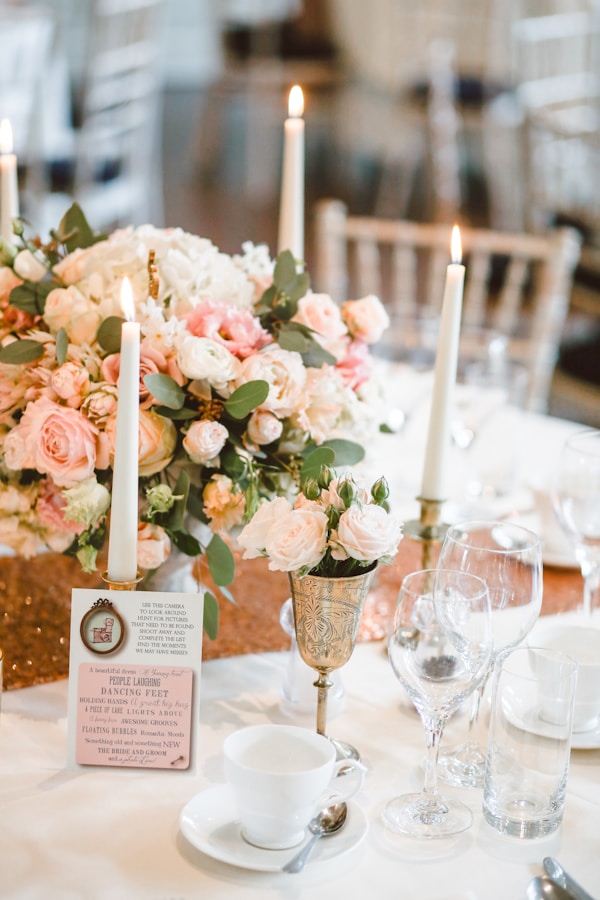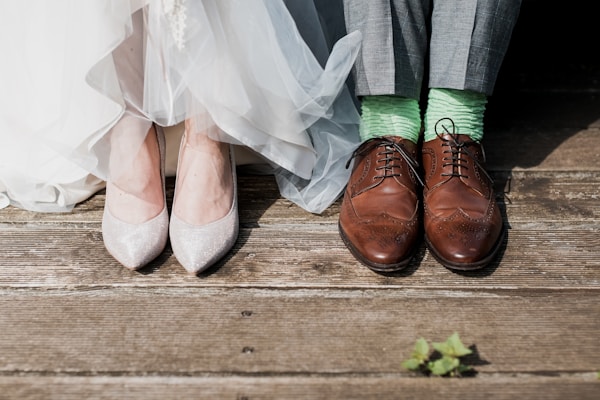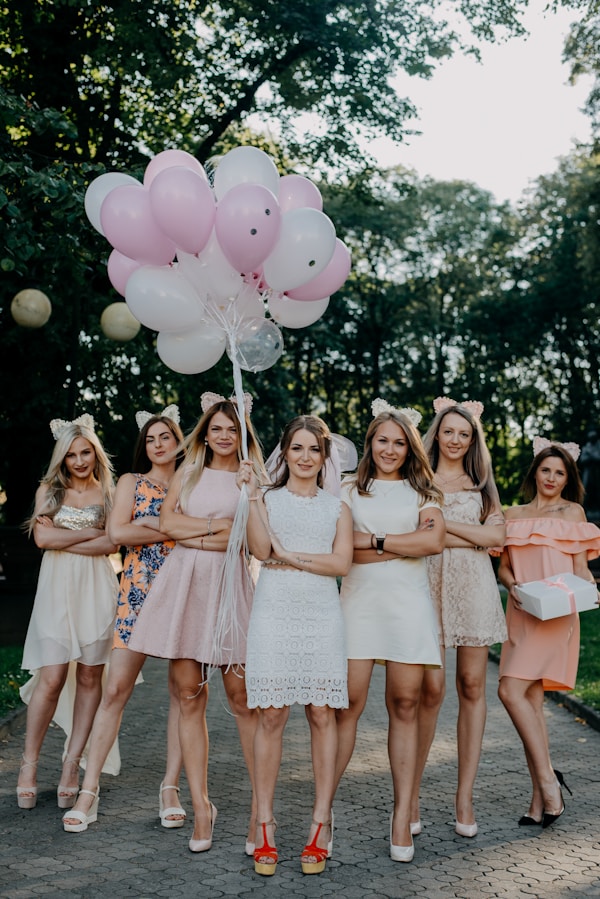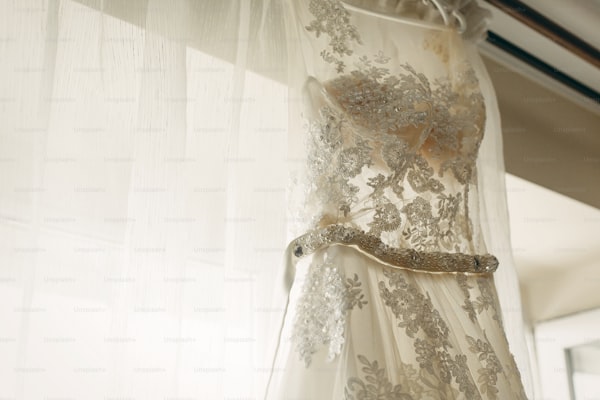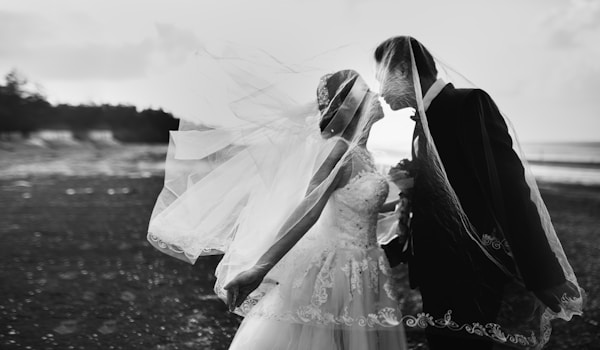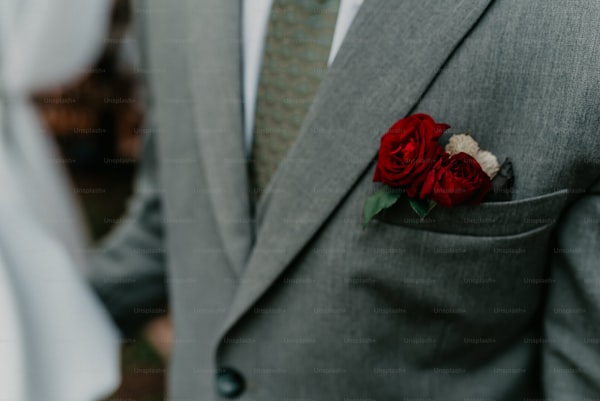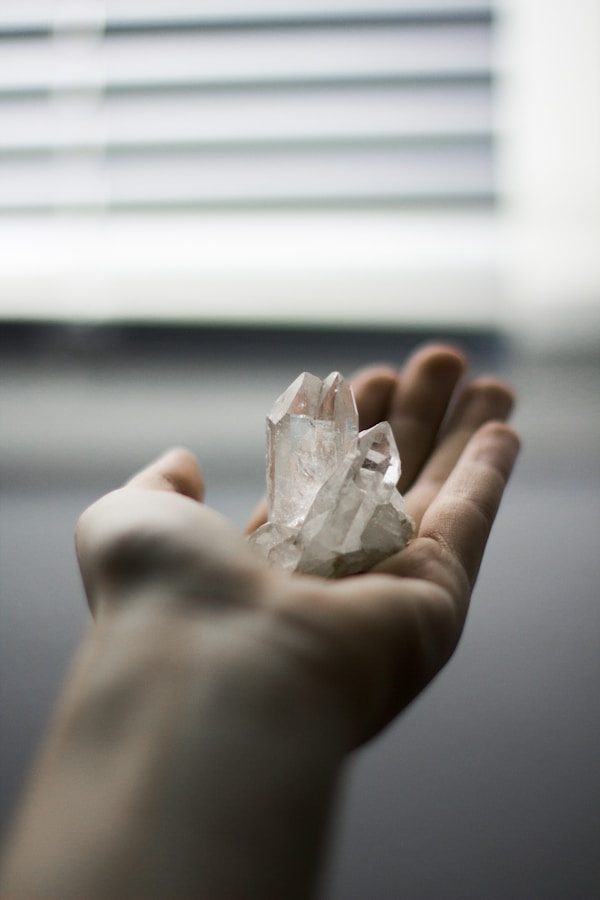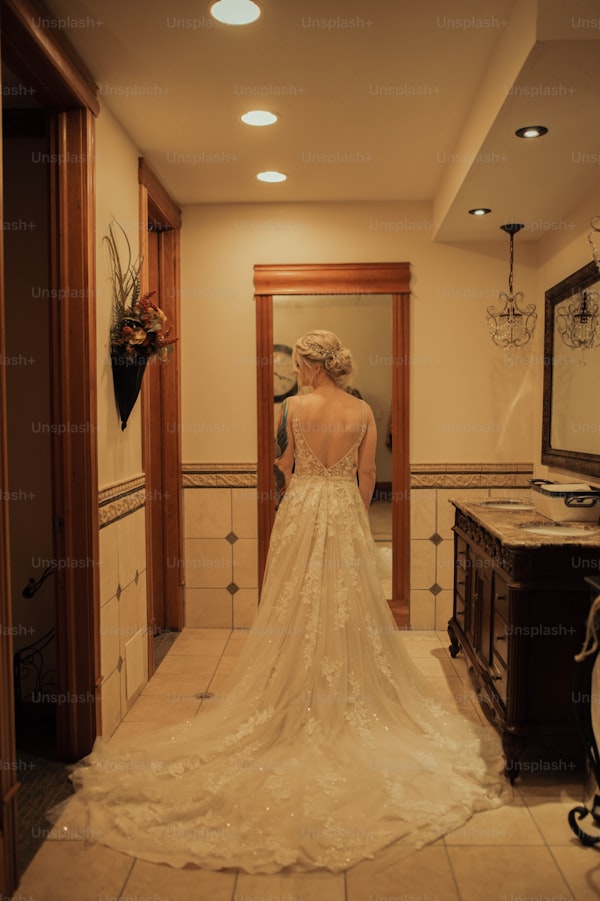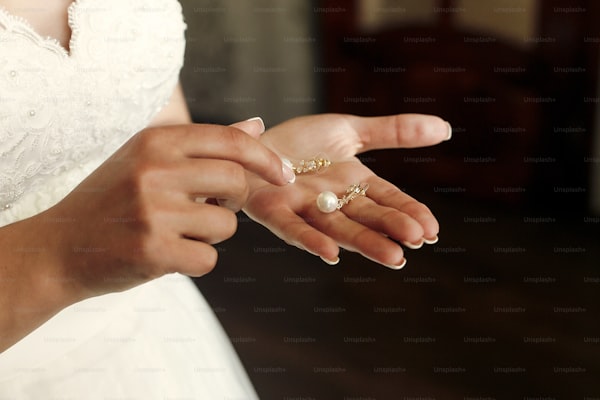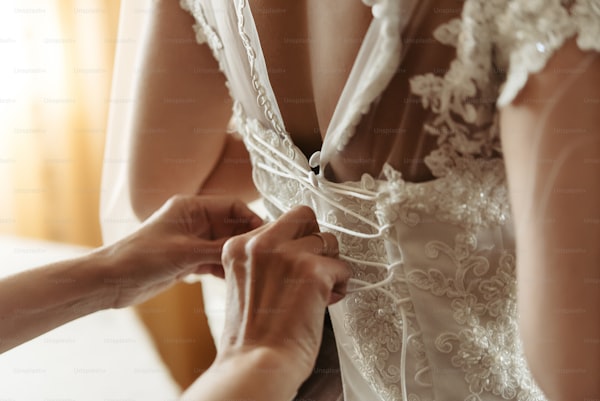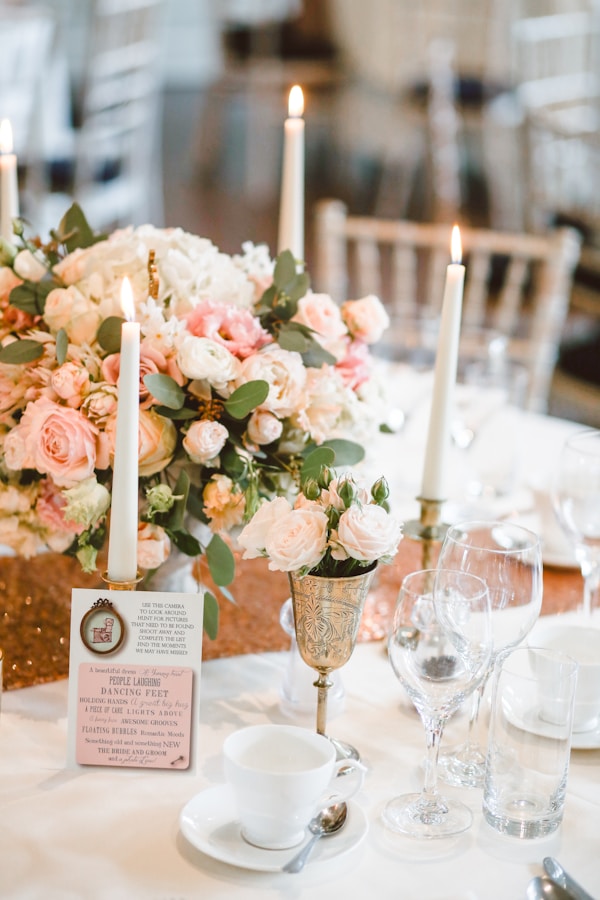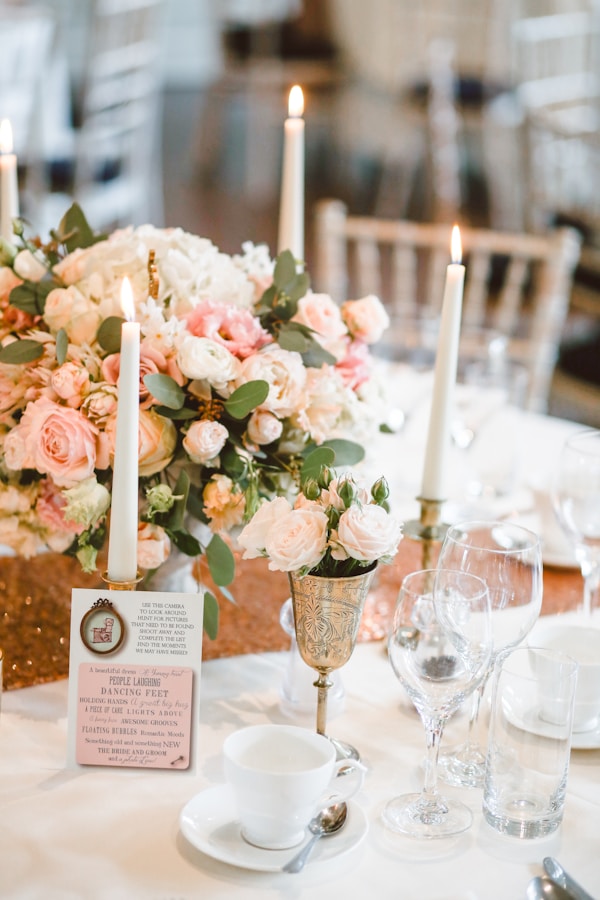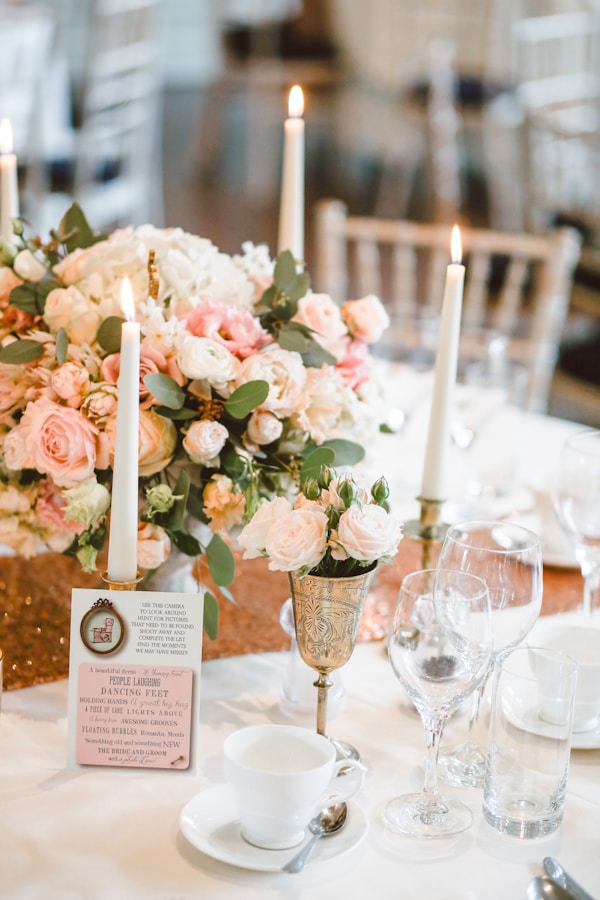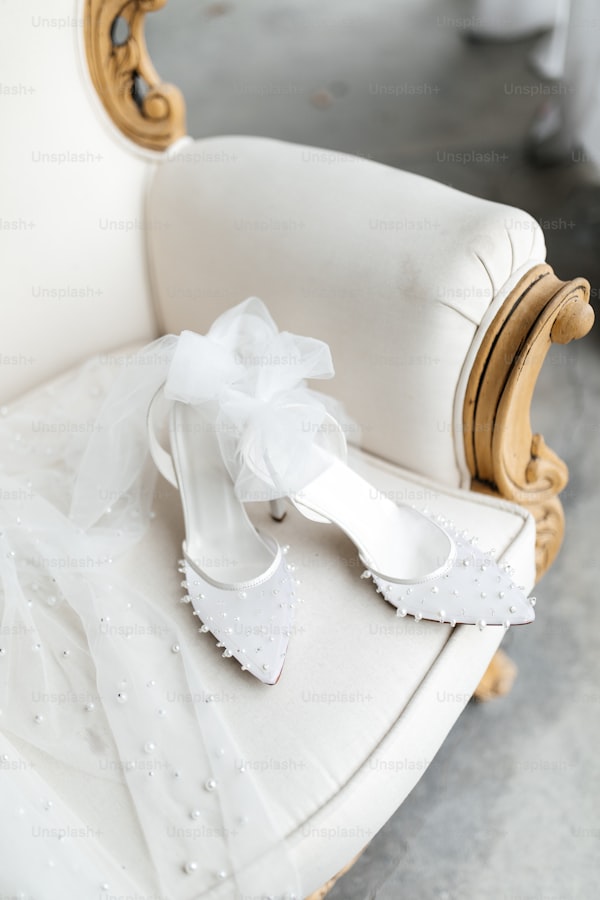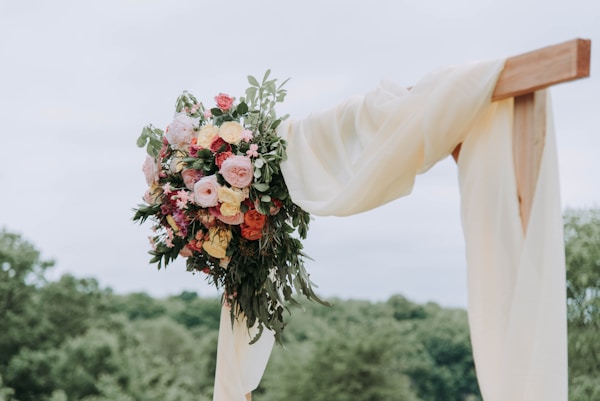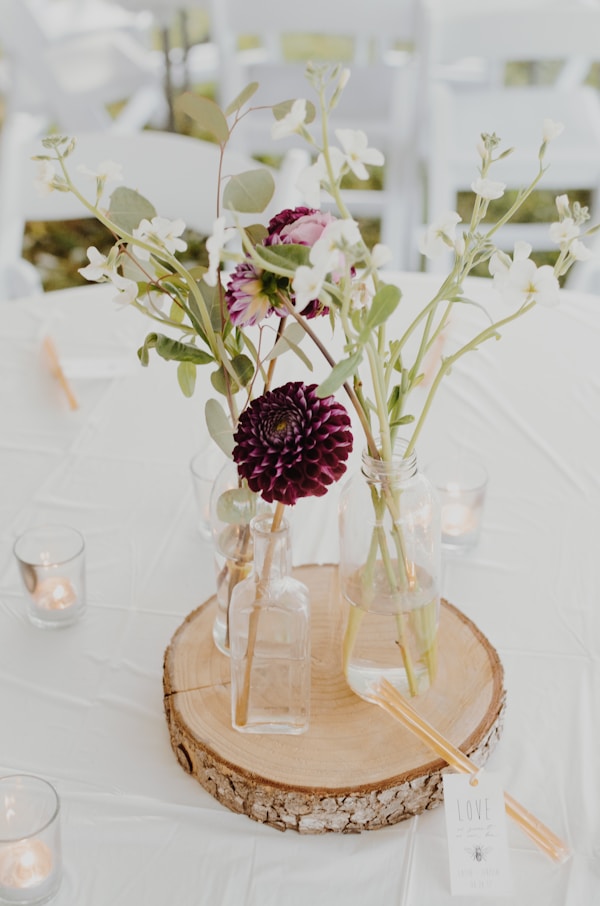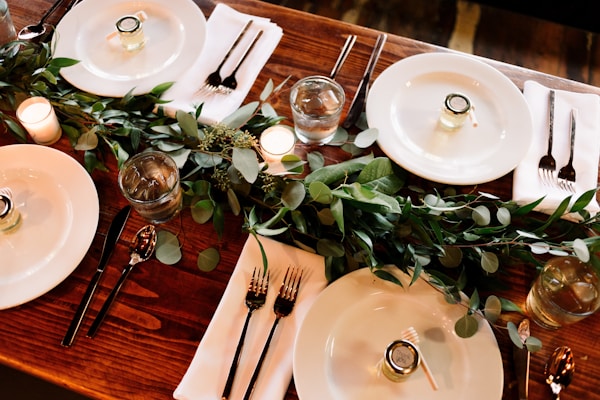Achieving the Perfect Hem: What Methods are Used to Create a Clean Finish on a Wedding Dress Hem?
When it comes to the world of wedding dresses, every detail counts, and the hem is no exception. A well-finished hem can elevate the entire look of a wedding gown, ensuring it appears polished and beautiful on one of the most important days of a bride’s life. But what methods are used to create a clean finish on a wedding dress hem? In this article, we’ll explore various techniques wedding dress designers and seamstresses utilize to achieve that impeccable finish, answering common questions along the way and providing tips for brides looking for their perfect gown.Importance of Hem Finishing in Wedding GownsThe hem of a wedding dress is crucial not only for appearance but also for functionality. A properly finished hem prevents fabric fraying, helps maintain the dress's shape, and can affect the overall drape and flow of the garment. An unfinished hem can detract from the overall aesthetic and might even hinder a bride's comfort during her big day. Common Techniques for Hem FinishingThere are several methods utilized to achieve a clean finish on a wedding dress hem, depending on the fabric, design, and desired look. Here are some of the most popular techniques:TechniqueDescriptionRoll HemA technique where the fabric is rolled and secured with stitches, creating a narrow hem that works well with lightweight fabrics.Blind HemThis method involves using a sewing machine to create nearly invisible stitches, resulting in a clean finish that doesn't detract from the dress's beauty.D...
Mastering the Art of Hemming a Wedding Dress Made of Tulle: The Best Methods Explained
When it comes to your big day, one of the most important elements is undoubtedly the wedding dress. Among the various fabrics used, tulle remains a popular choice due to its delicate, ethereal appeal. However, its gossamer quality can pose particular challenges when it comes to alterations, especially hemming. If you're asking, “What are the best ways to hem a wedding dress made of tulle?”, you’re in the right place. This guide delves into the best methods for hemming a tulle wedding dress, offering tips, advice, and a detailed look at the steps involved.Understanding Tulle: A Brief OverviewTulle is a lightweight, netting fabric that is often used in wedding dresses to create beautiful layers and volume. Its sheer quality can add a romantic touch to any gown, but it can also complicate the hemming process. Here are some characteristics of tulle to consider:CharacteristicDescriptionSheernessAllows for layering but can easily become frayed.DelicacyMay require gentle handling to avoid tearing.Static ClingTulle can attract static, affecting its fall and drape.Sewing CompatibilityRequires specific threads and needles to avoid snagging.The Best Methods for Hemming Tulle Wedding DressesHemming tulle requires a careful approach to ensure the final look is polished and beautiful. Below are several methods that you can employ:1. The Straight HemThis method is straightforward and works best for simple designs without intricate layers. Follow these steps:Measure the desired length while ...
Securing Embellishments on a Wedding Dress: A Comprehensive Guide
How do you secure embellishments on a wedding dress without visible stitching?When it comes to wedding dresses, every bride wants to achieve an immaculate look. One key aspect that can elevate the beauty of a gown is the embellishments. However, the challenge arises in securing these embellishments without visible stitching, ensuring a polished and sophisticated appearance. In this article, we will explore various methods, tips, and suggestions for securing embellishments on a wedding dress seamlessly.Types of Embellishments Commonly Used on Wedding DressesBefore diving into the methods of securing embellishments, let’s first understand the common types used in wedding dresses:Embellishment TypeDescriptionBeadsOften used for a touch of sparkle and texture.SequinsAdd shimmer and shine to the gown.Lace AppliquéCreates a romantic and vintage vibe.EmbroideryIntricate designs that enhance beauty.Floral EmbellishmentsAdd a fresh and playful appearance.Methods to Secure Embellishments Without Visible StitchingNow that you know the types of embellishments, let's move into the different techniques to secure them without visible stitches:1. Fabric GlueFabric glue is a popular choice among brides and designers for its ease of use. When using fabric glue, apply a thin layer to the back of the embellishment. Press it firmly onto the fabric of the dress and allow it to dry completely before moving the garment. This method works best for lightweight decorations like sequins and beads.2. Fus...
Mastering Wedding Dress Alterations: Handling Extensive Beadwork with Precision
How Do You Handle Alterations on a Wedding Dress with Extensive Beadwork?When it comes to wedding dress alterations, especially those with intricate beadwork, it can feel like navigating a labyrinth of choices and challenges. Many brides dream of a perfect fit on their special day, but for those wearing dresses adorned with extensive beadwork, the task can be daunting. So, how do you manage these alterations effectively without compromising the beauty and integrity of the dress? Let’s explore the process in detail.Understanding the Importance of Professional AlterationsWedding dresses are often one of the most important garments a woman will ever wear, symbolizing love and tradition. Because of this significance, alterations must be handled with care, especially for dresses embellished with beadwork. Professional tailors and seamstresses are skilled in making the necessary adjustments while preserving the design and decoration of the gown.Reasons Why Professional Help is Necessary Skill Level: Professionals have the experience to deal with delicate materials and intricate designs. Equipment: Specialized tools create precise alterations that home-sewing tools cannot replicate. Time Management: Professionals can often complete alterations more efficiently, alleviating stress for the bride.Steps to Handle Alterations on a Beaded Wedding DressLet’s delve into the steps involved in altering a wedding dress with extensive beadwork.StepDescription1Initial Fitting: Schedule a fitt...
Ensuring the Durability of Sequins and Rhinestones on a Wedding Dress: A Complete Guide
When it comes to the big day, every bride wants to look nothing short of stunning. One of the most popular choices for wedding attire is the embellished wedding dress, adorned with sequins and rhinestones that catch the light beautifully. However, a common concern among brides is, "How do you ensure the durability of sequins and rhinestones on a wedding dress?" This comprehensive guide will explore various methods to maintain the brilliance and longevity of these decorative elements while offering tips and insights for both brides-to-be and their designers.Introduction to Sequins and RhinestonesSequins and rhinestones are universally loved for the sparkle and elegance they bring to a wedding dress. Sequins are typically small, shiny discs made of plastic or metal, whereas rhinestones are glass or crystal jewels designed to mimic the sparkle of genuine diamonds. Both elements can transform a traditional gown into a dazzling piece of art. However, their durability can be a concern if not properly affixed or maintained. Let's delve into ways to ensure that your stunning embellishments remain intact throughout the celebration.Factors Affecting DurabilityUnderstanding the specific factors that affect the longevity of sequins and rhinestones is crucial. These include:FactorDescriptionMaterial QualityHigh-quality sequins and rhinestones are less likely to tarnish or break.Attachment MethodHow the embellishments are sewn or glued onto the fabric affects their durability.Fabric TypeTh...
Reinforcing Buttonholes on a Wedding Dress: Essential Techniques for the Perfect Fit
Understanding the Importance of Reinforcing Buttonholes on Wedding DressesA wedding dress is not just traditionally important; it's a fashion statement that can define a bride's special day. One often overlooked aspect of wedding dress construction is the buttonhole. Buttonholes serve both functional and decorative purposes, allowing the bride to fasten her dress securely. Therefore, it is crucial to reinforce them adequately. This article explores what methods are used to reinforce buttonholes on a wedding dress, ensuring they not only look beautiful but also withstand the test of time as you dance the night away.Why Reinforcement is NecessaryButtonholes are subjected to significant stress, especially during bustling wedding activities. If not reinforced properly, buttonholes can fray, split, or even tear the fabric, leading to an emergency wardrobe malfunction. Therefore, understanding the different methods for reinforcing buttonholes is essential for any bride-to-be or seamstress.Key Methods for Reinforcing ButtonholesMethodDescription1. InterfacingThis technique involves adding a layer of interfacing material behind the buttonhole, which supports the fabric and prevents stretching or fraying.2. Buttonhole StitchA specialized hand or machine stitch that binds the edges of the buttonhole together, providing durability.3. Fabric StabilizersUsing stabilizers can help keep the fabric in place and prevent distortion during sewing.4. Reinforced BackingAttaching a reinforced back...
Managing Alterations for a Wedding Dress with Hand-Painted Designs
When it comes to planning a wedding, every detail matters—especially the bride’s dress. One of the most unique choices a bride can make is opting for a hand-painted wedding dress. However, managing alterations for such a delicate and custom piece can be a daunting task. In this article, we’ll explore how to effectively manage alterations for wedding dresses featuring hand-painted designs, ensuring that the gown looks stunning on the big day while preserving the artistry of the hand-painted details.Understanding the Importance of Professional AlterationsWhen dealing with wedding dresses, especially those with intricate hand-painted designs, it’s crucial to enlist the help of a professional. Unlike standard fabrics, hand-painted designs require special care during the alteration process. Here are some reasons why professional alterations are essential: Expertise: Tailors experienced in wedding dress alterations understand how to navigate unique fabrics and designs. Precision: Professional tailors can ensure that the intricate details remain intact while altering the dress for size and fit. Preservation: A skilled tailor can recommend the best methods to preserve the integrity of hand-painted elements.Steps to Manage Alterations for Your Hand-Painted Wedding DressManaging alterations for your wedding dress can be broken down into several crucial steps:1. Find the Right TailorStart by researching tailors who specialize in wedding dresses. Look for professionals with positive r...
Transform Your Wedding Dress: The Best Methods for Applying Crystals Without Damaging the Fabric
What are the Best Methods for Applying Crystals to a Wedding Dress Without Damaging the Fabric?Your wedding dress is the centerpiece of your special day, and adding crystals can elevate its elegance to new heights. However, the process must be executed delicately to avoid damaging the fabric. In this article, we will explore the most effective methods for applying crystals to your wedding dress, ensuring that your gown shines bright without compromising its integrity.Why Choose Crystals for Your Wedding Dress?Crystals can significantly enhance the beauty of your wedding dress. Their sparkle catches the light beautifully, adding a touch of glamour. Here are a few advantages of using crystals: Elevates Aesthetics: Crystals can transform a simple gown into a stunning masterpiece. Versatility: They can be used on various fabrics and styles, making them suitable for any dress. Customizable: You can choose different colors and sizes to fit your wedding theme.Preparation: What You NeedBefore you begin applying crystals, gather the following materials: Top-quality crystals or rhinestones Fabric adhesive designed for delicate materials Small applicator or tweezers Measuring tape Fabric protector spray (optional)Best Methods for Applying CrystalsNow, let's delve into the best methods for applying crystals to your wedding dress without damaging the fabric. Below are three widely recommended techniques:MethodDescriptionProsConsFabric AdhesiveUsing a specific fabri...
Preserving the Sparkle: Techniques to Maintain the Clarity of Rhinestones on a Wedding Dress
Understanding the Importance of Rhinestones on Wedding DressesWhen it comes to wedding dresses, every detail matters. One of the most exquisite embellishments that brides often choose to incorporate is rhinestones. They add elegance, sparkle, and a touch of glamour to the overall look. However, maintaining the clarity and brilliance of these rhinestones is crucial for a stunning appearance on the big day. In this article, we will explore the various techniques used to maintain the clarity of rhinestones on a wedding dress.Why Rhinestones Dull Over TimeBefore diving into the maintenance techniques, it’s essential to understand why rhinestones may lose their sparkle. Factors contributing to dullness include: Exposure to Elements: Sunlight, humidity, and sweat can all lead to tarnishing and dulling of rhinestones. Improper Cleaning: Using the wrong cleaning products or techniques can scratch or degrade the surface of the stones. Wear and Tear: Regular movement and friction on the dress can lead to the loosening or fogging of stones.Effective Techniques to Maintain ClarityNow that we understand the factors affecting rhinestone clarity, let’s explore techniques to preserve their brilliance.1. Regular CleaningRegular cleaning is vital for maintaining the elegance of rhinestones. Here’s how to do it right: Cleaning Method Materials Needed Steps Gentle Soap Wash Warm water, mild detergent, soft cloth 1. Mix warm water with a few drops of mild soap.2. Dampen...
Effective Strategies to Prevent Bead Loss in Wedding Dress Production
IntroductionCreating a wedding dress is a meticulous art that demands attention to detail, particularly when it comes to embellishments like beads. As one of the most cherished elements of a bride's gown, beads add elegance and sparkle; however, bead loss during the production phase can lead to dissatisfaction and increased costs. So, how do you prevent bead loss during the production of a wedding dress? In this article, we'll explore various effective strategies to ensure the integrity and beauty of your design, while offering tips to enhance your overall production process.Understanding Bead Loss: Causes and ImplicationsBead loss in wedding dress production can be attributed to several factors. Understanding these can help you implement preventative measures effectively. Here are some common causes: Improper Sewing Techniques: If beads are not securely sewn onto the fabric, they can easily fall off during production or after the wedding. Low-Quality Materials: Using inferior beads or threads may lead to premature wear and tear. High-Volume Production: In a fast-paced environment, attention to detail can be sacrificed, leading to increased bead loss.Preventive Measures: Best Practices for Bead ApplicationTo mitigate bead loss, implement these best practices in your production processes:1. Invest in Quality MaterialsEnsure that you are using high-quality beads and threads that can withstand the stresses of wearing and cleaning. Opt for materials such as glass beads o...
Mastering Wedding Dress Alterations: Expert Tips for Lace-Up Back Adjustments
How to Handle Alterations for a Wedding Dress with a Lace-Up Back?Wedding dress shopping can be a thrilling experience, but it often leads to a pivotal question: How do you handle alterations for a wedding dress with a lace-up back? Lace-up backs are a popular design choice due to their aesthetic appeal and adjustable fit. However, they also come with specific requirements when it comes to alterations. In this article, we’ll guide you through the essential steps for handling these alterations, along with insights and tips to ensure your dress fits perfectly on your big day.The Importance of Professional AlterationsWhen it comes to altering a wedding dress, especially one with a lace-up back, the importance of professional alterations cannot be overstated. Here are a few reasons why: Expertise: Tailors specializing in bridal wear have extensive knowledge of different fabrics and designs. Precision: The style of a lace-up back requires precision to ensure that the laces can cinch properly and provide the desired shape. Time-Saving: While DIY alterations might seem tempting, a professional will save you time and stress. Quality Adjustments: Professional alterations often yield better results than home attempts.Key Steps in Altering Your Lace-Up Wedding DressWhen you take your wedding dress to a tailor, you need to communicate your expectations clearly. Here are the key steps involved in altering a lace-up back wedding dress:1. Initial FittingThe first step is the ini...
Mastering Appliqué: Techniques for Attaching Appliques to a Wedding Dress Bodice
IntroductionWhen it comes to wedding dresses, the details make all the difference. One of the most beautiful and intricate details is the use of appliques. These decorative elements can add elegance and a personal touch to a wedding dress bodice. But what techniques are used to attach appliques to a wedding dress bodice? This article will explore various methods, their pros and cons, and tips to help you achieve a stunning look for your special day.Understanding AppliquesBefore diving into the techniques, it’s important to understand what appliques are. Appliques are decorative pieces of fabric sewn onto a garment to create designs or patterns. They can be made from a variety of materials, including lace, satin, or even sequins, which can completely transform the appearance of a wedding dress.Commonly Used Techniques for Attaching AppliquesAttaching appliques to a wedding dress bodice can be executed using several techniques. Let’s break down the most popular methods:TechniqueDescriptionProsCons1. Hand StitchingUsing needle and thread to manually sew the appliqué onto the fabric.Provides precision and can create intricate designs.Time-consuming and requires sewing skills.2. Machine SewingUtilizing a sewing machine to stitch the appliqué onto the bodice.Faster than hand stitching and can handle multiple layers of fabric.Less control over precision compared to hand stitching.3. Fusible WebbingA bonding material applied to the back of the appliqué, which adheres when heat is app...
Achieving a Flawless Satin Finish on Your Dream Wedding Dress
How Do You Achieve a Smooth Finish on a Wedding Dress Made of Satin?Choosing the perfect wedding dress is a monumental decision for any bride. Among various fabrics, satin stands out due to its luxurious sheen and smooth texture. However, working with satin can be challenging, especially when it comes to achieving a flawless finish. In this article, we will explore the steps needed to ensure your satin wedding dress looks impeccable.Understanding Satin: The Fabric of EleganceSatin is a weave that typically consists of silk, polyester, or a blend of both. The fabric is known for its glossy surface, which reflects light beautifully, adding an elegant touch to any gown. However, this same shine can also reveal imperfections if not properly handled. Here are some essential characteristics of satin to consider:Characteristics of SatinLuxurious sheenSlight stretchSensitive to heatProne to snagsRequires careful cleaningSelecting the Right TailorWhen it comes to tailoring your satin wedding dress, choosing the right professional is crucial. Look for a tailor with experience in working with satin. An experienced tailor will understand the nuances of this fabric and can make adjustments without compromising the integrity of the material. Don't hesitate to ask for references or examples of previous work, as this can provide insight into their expertise.Questions to Ask Your TailorBefore entrusting your gown to a tailor, consider asking the following questions:How much experience do you ...
Ensuring the Durability of Fabric Flowers on Wedding Dresses: Tips and Methods
IntroductionWedding dresses hold a special place in the hearts of brides around the world. Among the most cherished details are fabric flowers, which add a touch of elegance and personalization to the gown. However, ensuring the durability of these beautiful embellishments is crucial, as they can be prone to wear and tear during the event. In this article, we will explore what methods are used to ensure the durability of fabric flowers on a wedding dress, along with other related considerations such as care tips, different fabric types, and design choices.Understanding Fabric FlowersFabric flowers are often crafted from various materials, including silk, organza, cotton, and tulle. Each type of fabric has its advantages and disadvantages. For example, silk flowers look incredibly realistic but can be more delicate, while tulle is airy and lightweight, making it a popular choice. Understanding the characteristics of different fabrics is essential when selecting the right flowers for a wedding dress.Advantages of Using Fabric Flowers Longevity: Unlike fresh flowers, fabric flowers do not wilt or deteriorate over time, allowing brides to preserve their wedding dress as a keepsake. Customization: Fabric flowers can be dyed to match any color scheme, ensuring the perfect match with the wedding theme. Low Maintenance: They require minimal effort to maintain and can be cleaned easily, making them ideal for brides who want to avoid constant care.Methods to Ensure DurabilityTo ensu...
The Ultimate Guide to Attaching Lace to a Sheer Wedding Dress: Best Practices and Tips
What are the Best Practices for Attaching Lace to a Sheer Wedding Dress?When it comes to creating the perfect wedding dress, one of the most elegant combinations is lace and sheer fabric. The soft delicacy of sheer fabrics beautifully contrasts with the intricate detailing of lace, resulting in a stunning bridal look. However, attaching lace to a sheer wedding dress can be a challenging task. In this article, we will explore the best practices for achieving a flawless finish when working with these materials.Understanding Sheer FabricsBefore we delve into the techniques, it's important to understand what sheer fabrics are. Sheer fabrics such as chiffon, organza, and tulle are lightweight and translucent, making them a popular choice for modern wedding dresses. However, their delicate nature requires careful handling when adding embellishments like lace.Types of Lace to ConsiderLace comes in various styles, so selecting the right type for your sheer wedding dress is key. Here are some popular options:Type of LaceDescriptionChantilly LaceLightweight and romantic, often featuring floral patterns.Alençon LaceCharacterized by its scalloped edges and intricate embroidery.Guipure LaceHeavier and more structured, perfect for adding detail without losing shape.Preparing to Attach LaceBefore you start attaching lace to your sheer fabric, there are several steps to follow for the best results:1. Gather Your MaterialsSheer fabric (e.g., chiffon, tulle, etc.)Lace trim or lace fabricFabric...
Unveiling the Secrets: What Are the Best Ways to Clean a Wedding Dress Made of Mixed Materials?
Wedding dresses are more than just garments; they symbolize love, commitment, and unforgettable memories. However, they can be especially challenging to clean, especially when made of mixed materials. In this article, we will explore the best methods to clean a wedding dress made from various fabrics while ensuring your dress retains its beauty and integrity. If you're wondering, "What are the best ways to clean a wedding dress made of mixed materials?" you're in the right place!Understanding Mixed Materials in Wedding DressesBefore diving into cleaning methods, it is essential to understand what "mixed materials" mean in the context of wedding dresses. A wedding dress may consist of various fabrics, including silk, satin, lace, tulle, and even beaded embellishments. Each material requires different care techniques to maintain its original condition without causing damage.Common Types of Materials Used in Wedding DressesMaterial TypeCharacteristicsCleaning MethodSilkSoft, luxurious, and delicateDry clean preferred, Spot clean with careSatinGlossy and smooth textureDry clean, Hand wash in cool waterLaceDelicate and intricateHand wash, Avoid soakingTulleLightweight and sheerSpot clean, Steam if wrinkledBeadedEmbellished with beads; may be on other fabricsSpot clean, Avoid machine washEssential Pre-Cleaning StepsBefore cleaning your wedding dress, consider the following steps:1. Check the Care LabelAlways start by checking the care label on your dress. It can provide specific cl...
How to Maintain the Clarity of Crystals on a Wedding Dress During Cleaning
Introduction When it comes to your wedding day, every detail matters, especially the wedding dress adorned with stunning crystals. Ensuring that these crystals remain clear and brilliant is crucial for both the beauty of the dress and the memories captured in photographs. In this article, we will explore effective methods to maintain the clarity of crystals on a wedding dress during cleaning. We will also address common questions, best practices, and tips to keep these embellishments sparkling for years to come. Understanding the Materials Before diving into cleaning techniques, it is important to understand the materials involved in your wedding dress. Most wedding dresses are made from delicate fabrics like silk, satin, or tulle, and they often feature crystals made from various materials such as glass, Swarovski, or acrylic. Each type of crystal may require different cleaning methods to avoid damage while preserving clarity. Tips for Cleaning Your Wedding Dress 1. Pre-Cleaning Preparations Prior to washing your wedding dress, consider these preparatory steps: Check Care Labels: Always refer to the care label attached to your wedding dress. It often contains valuable information on cleaning methods and recommendations. Spot Test: Before applying any cleaning solution to the entire garment, conduct a spot test on a hidden area to ensure the fabric and crystals do not react negatively. Materials Needed: Gather gentle fabric soap, soft brushes, clean white cloths, and a deli...
Effective Strategies to Prevent Bead Discoloration on a Wedding Dress
Your Dream Wedding Dress: Preserving Its BeautyA wedding dress is often one of the most significant purchases in a bride's life. With intricate details and beautiful embellishments such as beading, maintaining the pristine condition of this garment is essential. One of the common concerns brides may face is bead discoloration over time. In this article, we will explore how you can prevent bead discoloration on a wedding dress and ensure it remains as stunning as the day you wore it.Understanding Bead DiscolorationBead discoloration can occur due to various factors including exposure to moisture, body oils, makeup, and environmental pollutants. This discoloration can detract from the beauty of the dress, leaving brides worrying about their wedding day memories. To effectively combat this issue, a proactive approach is necessary.1. Choose the Right BeadsWhen selecting your wedding dress, consider the type of beads used in the design. Glass beads, for instance, typically withstand discoloration better than plastic beads. Additionally, crystal beads often offer a more durable finish compared to other materials. Consult your designer regarding the choice of beads and their longevity.Preventative Measures to Protect Your DressImplementing certain protective measures can significantly reduce the risk of bead discoloration. Here are some effective methods:2. Store ProperlyAfter your wedding, proper storage is crucial. Avoid hanging your dress on a hanger for long durations, as this c...
Best Practices for Hand-Washing a Wedding Dress with Delicate Materials
The Ultimate Guide to Safely Hand-Washing Your Wedding DressYour wedding dress is likely one of the most significant garments you will ever own, filled with memories from one of the most important days of your life. However, after the celebration, it may need a thorough cleaning, especially if it’s made from delicate materials. This article explores the best practices for hand-washing a wedding dress, ensuring that it remains beautiful for years to come.Understanding the FabricBefore diving into the hand-washing process, it's crucial to identify the fabric of your wedding dress. Delicate materials such as silk, chiffon, lace, and tulle require special care and techniques. Here are some common types of fabrics used in wedding dresses:Fabric TypeCare TipsSilkUse cold water and a gentle detergent. Avoid wringing or twisting.LaceGently submerge and avoid scrubbing; lace is easily damaged.ChiffonUse a delicate wash, soak briefly, and lay flat to dry.TulleHand wash carefully, avoiding direct sunlight when drying.Preparing for the Hand-WashBefore you begin washing your wedding dress, you need to prepare adequately. Follow these preparatory steps to ensure the process goes smoothly:Check the care label: Always start by reading the manufacturer’s care label for specific instructions.Gather supplies: You will need a bathtub or large sink, cold water, a gentle detergent (ideally meant for delicate fabrics), and a clean, white towel.Make space: Ensure that you have enough room to lay the...
How to Prevent Fabric from Shrinking When Washing a Wedding Dress: Essential Tips & Tricks
Washing a wedding dress is a delicate task that speaks volumes about how well you care for your treasured keepsake. One major concern for many brides is, “How do you prevent fabric from shrinking when washing a wedding dress?” This article will guide you through the essential tips and precautions needed to preserve the integrity of your beautiful dress while ensuring it remains in pristine condition.Understanding Fabric ShrinkageBefore jumping into preventive measures, it's crucial to understand why fabric shrinks. Fiber types, weave constructions, and environmental elements all play a role. For example, fabrics like cotton and silk have a tendency to shrink when exposed to heat and water, while synthetic fibers may not exhibit the same behavior.Common Fabric Types Used in Wedding DressesFabric TypeShrinkage PotentialCare TipsSilkHighDry clean only or cold hand washCottonMediumWash in cold water, air drySatinMedium-HighDry clean recommendedLaceMediumSpot clean or dry cleanOrganzaMediumFollow specific care guidesTips to Prevent ShrinkageTo ensure your wedding dress remains beautiful and intact for years to come, adhere to the following recommendations:1. Read the Care LabelYour wedding dress care instructions are your best friend. Always check the label for specific washing methods. Most wedding dresses require dry cleaning, but some can be hand washed.2. Opt for Professional CleaningIf you’re unsure of how to care for your dress, hiring a professional cleaner with experience ...
